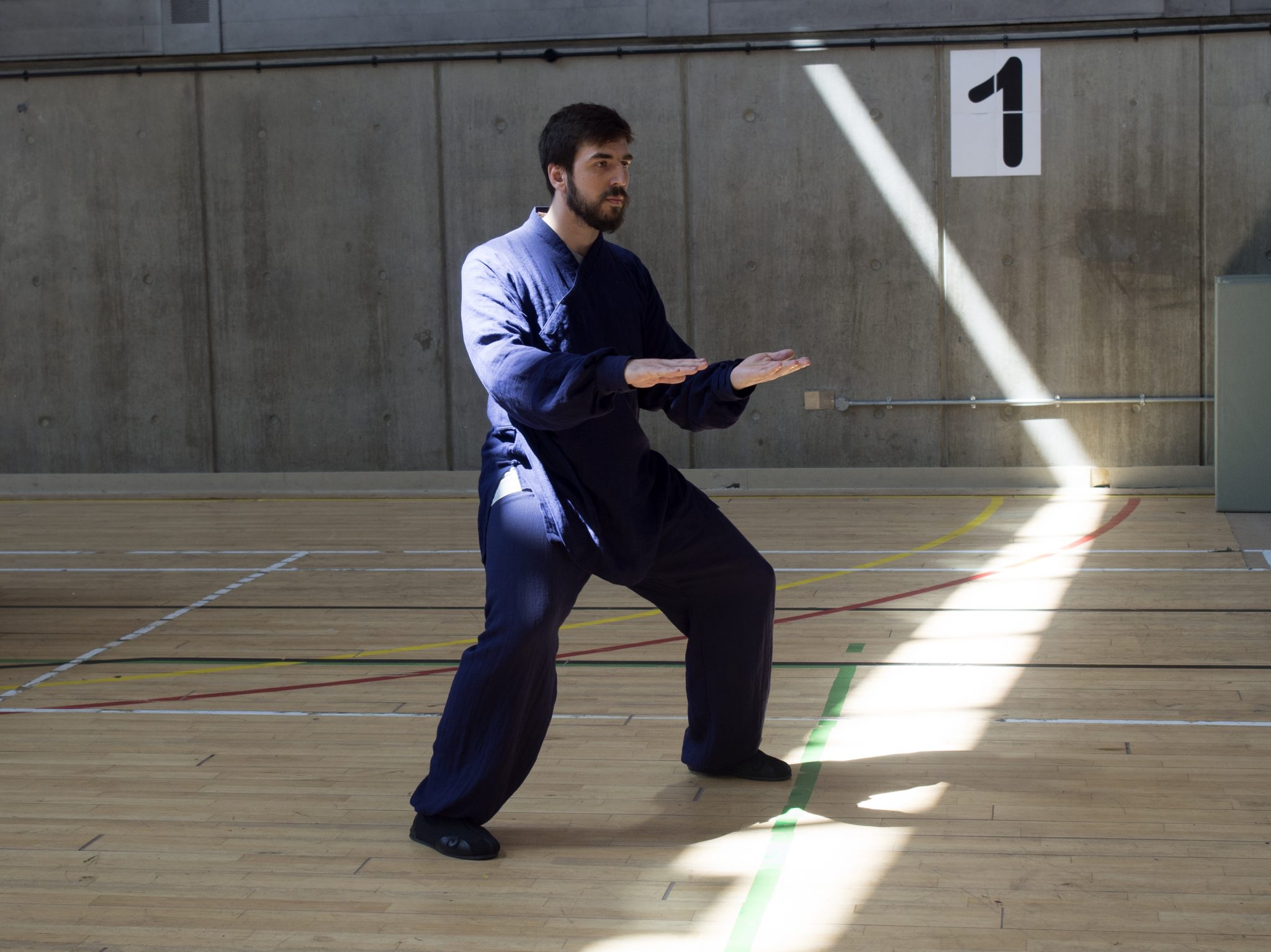
The 10 Different Training Steps in Taijiquan – Levels 1 and 2
The 10 Different Training Steps in Taijiquan – Levels 1 and 2
By one of our students, Florian Croisé
Introduction
According to Master Yazi Liu, there are 10 levels of mastery in Taijiquan (太极拳). These levels should be seen as principles that a practitioner should strive to achieve in his practice, in order to reach the highest peaks of Taijiquan. It is interesting to notice that these training steps are not unique to Taijiquan but are also shared by Baguazhang (八卦掌) and Xingyiquan (形意拳).
They can roughly be divided in two main groups:
The first four levels mainly have to do with body dynamics and structure. They can be considered as preparatory training or body conditioning, the end-goal being to achieve a “Taiji body”.
The remaining six principles are considered high level for Taiji and are in the realm of Qigong (气功), or Neigong (内功). At this level, the Taiji practice gets internal and focuses on Qi (气) usage and circulation. The focus shifts from controlling the body to controlling Qi.
Level 1 – Fang Song (放松) and Peng (掤)
The first level of Taijiquan is called Fang Song (放松) and can roughly be translated in English by “let loose” or “relax”. The abandonment of muscle power and tension is an indispensable precondition to any further Taijiquan training.
Master Liu once explained that Qi circulates through meridians in the very same as blood does in veins and arteries. The major difference is that when a muscle tenses, it compresses meridians and blocks Qi flow. As a result, no internal power can be generated and neither can power be successfully moved from one part of the body to another. Moreover, Fang Song is also the key to rooting the body in the ground, allowing for greater balance and power. Fang Song nevertheless does not mean that the body must be completely relaxed, or the power will disperse. The main feature of a successful Taiji body is that it is relaxed enough to allow power and qi to circulate but also possesses muscle tonus called Peng (掤) in Chinese.
To link this to traditional Chinese theories, the body must be both Yin and Yang.
Level 2 – All Body Together
The second principle, “all body together”, is illustrated by a famous Chinese phrase: “When one part of the body moves, the whole body moves” 一动不动要动全动 . This means that when one is pushing something, it is not just his arms which are pushing, the whole body is. In order to reach this second level, the entire body must move as an integrated whole: movement of the legs is coordinated with the movement of the arms, the elbows are coordinated with the hips, and the feet are coordinated with the hands. One key point in moving the whole body together is the connection between the lower and upper body through the kua area. Without a properly locked kua, the upper and lower body cannot properly work together.

More later on the other levels!